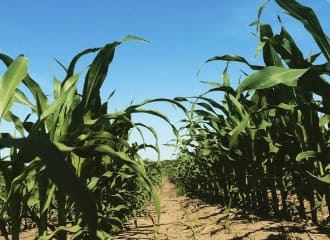Where do the grain markets go from here?
Apr 05, 2021

By: Zack Gardner, Key Cooperative Grain Marketing and Origination Specialist
On last Wednesday’s report (3/31/21), the USDA surprised everyone in the markets by releasing prospective planting numbers that were below the lowest of any estimates out there. Back in February, the USDA hinted at 92 million acres of corn and 90 million acres of soybeans this year. Last Wednesday, the USDA estimated 91.1 million acres of corn and 87.6 million acres of beans to be planted.
At the end of the day, price is a function of supply and demand. The lower acreage number on corn simply means we have a tighter supply on-hand for next year. With the 91.1 million acres that the USDA gave us and a trend line yield, we are projected to have an approximate nine percent carryout/surplus at the end of next year. Traditionally speaking, or at least comparing this number to the most recent five or six years, this number is friendly to corn prices. As for beans, the numbers the USDA gave us were unsustainably bullish. What do I mean by that? With the 87.6 million acres of soybeans that the USDA said we will plant, paired with a trend line yield, we will have a negative carryout/surplus for next year. This can’t happen. A negative carryout means that we will run out of soybeans at some point in the crop year. Economically speaking, this can’t happen because supply and demand is a function of price. This tells me that the price of soybeans will get to a point where we either plant enough acres, or we start pricing ourselves out of an export program or our domestic crush program.
There are a couple potential market movers that we need to keep an eye on. The price of wheat has been rapidly decreasing. This promotes feeding wheat as a substitute for corn, planting corn over top of poorly emerging winter wheat fields, and it promotes China cancelling our approximate one billion bushels in outstanding corn export sales to them since they could go buy wheat cheaper elsewhere. Another big market driver will be whether or not we see another resurgence of African Swine Fever (ASF) in China. China has already taken delivery on our soybean crop and is now taking Brazil’s. If China loses demand for soybeans due to ASF, it will force Brazil’s soybean crop elsewhere. Will our normal soybean export partners need our beans come fall if they were forced (via cheap prices) to take Brazil’s beans this summer?
At the end of the day, the most important thing to remember is the solution to high prices, is high prices.
On last Wednesday’s report (3/31/21), the USDA surprised everyone in the markets by releasing prospective planting numbers that were below the lowest of any estimates out there. Back in February, the USDA hinted at 92 million acres of corn and 90 million acres of soybeans this year. Last Wednesday, the USDA estimated 91.1 million acres of corn and 87.6 million acres of beans to be planted.
At the end of the day, price is a function of supply and demand. The lower acreage number on corn simply means we have a tighter supply on-hand for next year. With the 91.1 million acres that the USDA gave us and a trend line yield, we are projected to have an approximate nine percent carryout/surplus at the end of next year. Traditionally speaking, or at least comparing this number to the most recent five or six years, this number is friendly to corn prices. As for beans, the numbers the USDA gave us were unsustainably bullish. What do I mean by that? With the 87.6 million acres of soybeans that the USDA said we will plant, paired with a trend line yield, we will have a negative carryout/surplus for next year. This can’t happen. A negative carryout means that we will run out of soybeans at some point in the crop year. Economically speaking, this can’t happen because supply and demand is a function of price. This tells me that the price of soybeans will get to a point where we either plant enough acres, or we start pricing ourselves out of an export program or our domestic crush program.
There are a couple potential market movers that we need to keep an eye on. The price of wheat has been rapidly decreasing. This promotes feeding wheat as a substitute for corn, planting corn over top of poorly emerging winter wheat fields, and it promotes China cancelling our approximate one billion bushels in outstanding corn export sales to them since they could go buy wheat cheaper elsewhere. Another big market driver will be whether or not we see another resurgence of African Swine Fever (ASF) in China. China has already taken delivery on our soybean crop and is now taking Brazil’s. If China loses demand for soybeans due to ASF, it will force Brazil’s soybean crop elsewhere. Will our normal soybean export partners need our beans come fall if they were forced (via cheap prices) to take Brazil’s beans this summer?
At the end of the day, the most important thing to remember is the solution to high prices, is high prices.